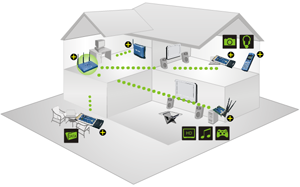TRENDnet TEW-631BRP Router and TEW-621PC PC Card
Introduction and Product Specifications
At this point in time, it's probably safe to assume that the majority wireless network users are outfitted with some type of 54Mbps solution. First introduced in 2003, 802.11g has proven its worth as a solid wireless technology for both home and business users alike. However, as technology advances and the demands for more bandwidth and improved range increase, a new solution is needed as 802.11g has essentially reached its peak in terms of features and capabilities.
To help address the need for better security, longer range and more bandwidth, the powers that be have come up with 802.11n (draft) technology. "Draft" indicates the technology is proven but has not completed the standardization process, which is slated to occur within the next year or so. Nonetheless, the design is in place and the proposed standards are clear, allowing manufacturers to start designing and marketing products that offer many of the benefits of the future 802.11n standard.
|
Image Courtesy of TRENDnet-Click to Enlarge |
So what makes 802.11n (draft) so much better than the popular 802.11g and older 802.11b technology? In a nutshell, 802.11n brings significantly higher bandwidth (300Mbps peak vs 802.11g's 54Mbps and 802.11b's 11Mbps). Additonally, the potential range of 802.11n (draft) is nearly double that of 802.11g, helping to increase coverage and maintain a stronger signal through solid objects.
Today, we are going to take a look at two 802.11n (draft) hardware components. The main focus of our review will be on the TRENDnet TEW-631BRP Firewall Router which brings future 802.11n features to the table as well as backwards compatibility with 802.11b and g. Second, we have the TEW-621PC Wireless CardBus which is a PCMCIA add-on that helps laptops enjoy full 300Mbps capabilities when used in conjunction with a router like the TEW-631BRP. By combining the two in our test environment, we'll be able to demonstrate the advantages of 300Mbps over 54Mbps WiFi as well as spotlight the features each product brings to the table.
|
|
|
|
TRENDnet TEW-631BRP Firewall Router
|
Media Access Protocol:
TEW-621PC Wireless CardBus
|







